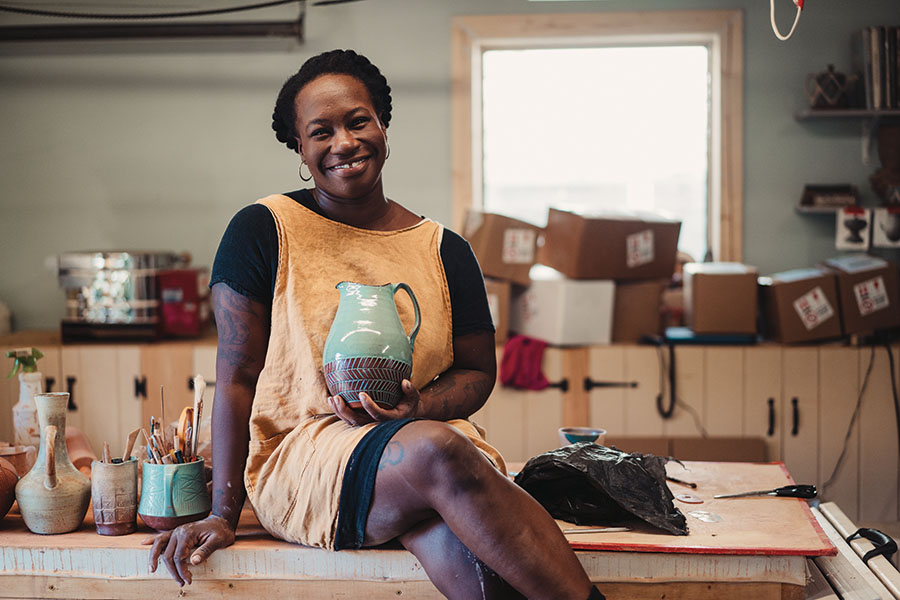When your punk band is signed to the foremost “riot grrrl” record label along with Bikini Kill and Sleater Kinney, playing shows and touring take priority over just about everything else. Such was the case for Osa Atoe, who played violin in the all-girl punk band “New Bloods” with whom she toured North America and Europe. “I was probably making coffee then,” she says, “but my career was never the center of my life; my jobs were to finance my punk life.”
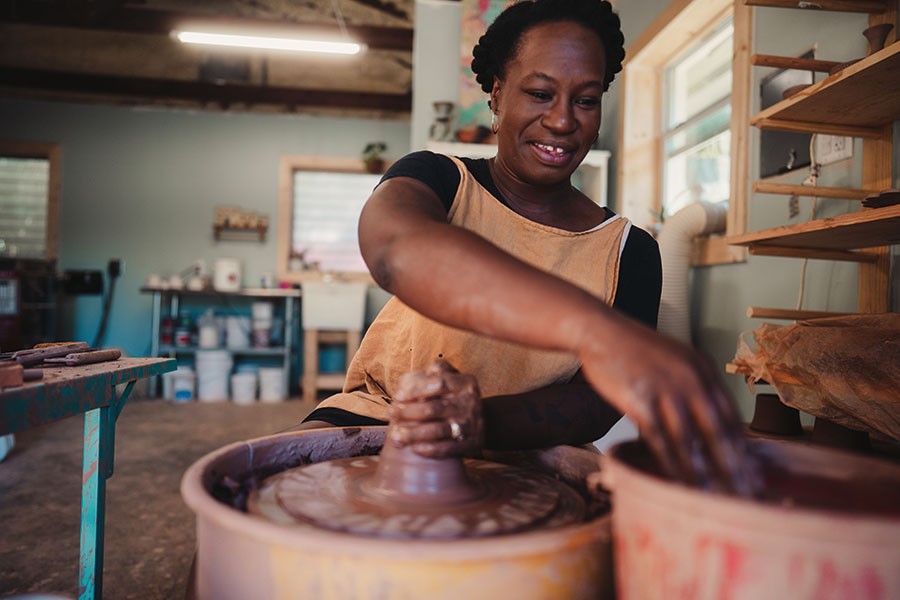
Atoe loved the freedom of punk music, its countercultural undercurrents, the power of foregoing polish for the raw grit of spontaneous action. But those same dynamic elements that held her for so long also came with their own limitations. “For one thing, punk rock is not for making ends meet,” she says, “but it’s also really start-and-stop, so there’s a lot of starting over from scratch.” Atoe and New Bloods made it about as far as any punk band ever aspires to and she began to wonder what it would be like to pursue a discipline she could get better at over time.
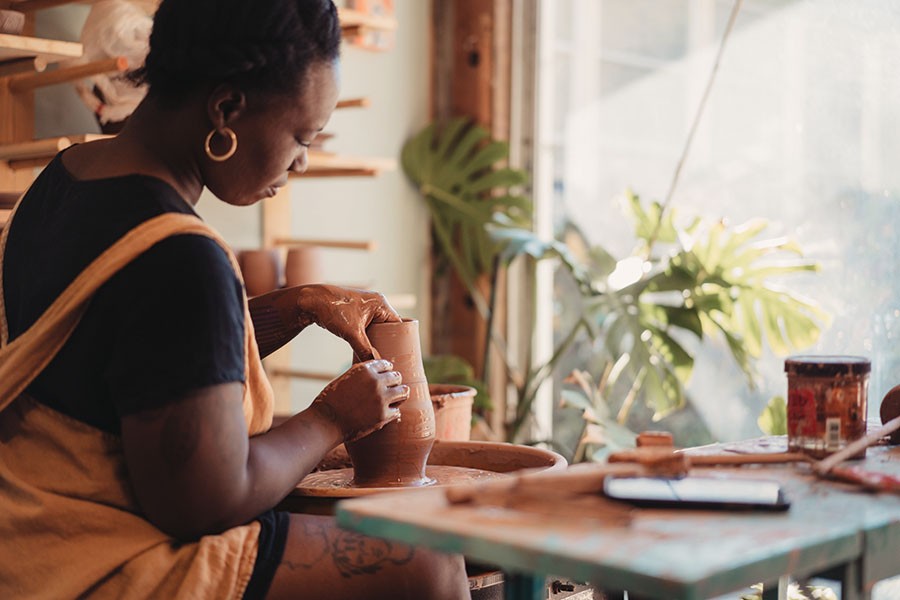
This was the questing existential state she found herself in when she stepped into a community pottery class in 2013. “I just felt like I needed a medium I could do on my own and I tried writing music solo which didn’t feel comfortable,” says Atoe, “and I don’t know what it was about that pottery class, but a bug definitely bit me.” She took those pottery classes for two more years, acquiring a pottery wheel and a Skutt KM-818 kiln along the way. Then the pottery bug sent her to Baton Rouge to complete a one-year post-baccalaureate program in ceramics at Louisiana State University. In the seven intervening years between that fateful pottery class in 2013 and her move to Sarasota in August of last year, Atoe settled into an altogether different rhythm.
She set up shop in the two-car garage of the Indian Beach home she shares with her husband. Her days look quite different now. “Every month I’ll spend maybe two or three weeks making things, firing and glazing,” she says, “then I’ll spend a week uploading my new stuff to the site and shipping product, which is no joke.” When she works in her studio, she listens to podcasts rather than punk. She spends a lot of her free time at the beach or flipping through pictures of other ceramists’ work. “I think the way I’m operating now is in response to some of punk’s limitations,” she says.
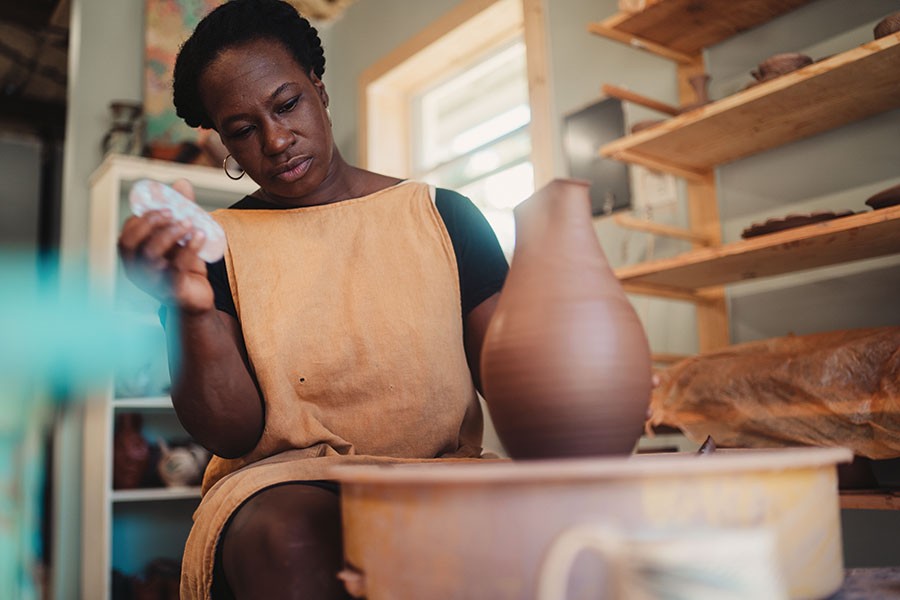
If a throughline exists between her punk rock and ceramics, it’s in the way she fully immerses herself in the history and lore of each medium to embody the ethos with integrity and authenticity. “When I first started with red clays, I researched a lot of terracotta ceramics,” she says, “and that took me back in history to things like the Terracotta Army in China or Bronze Age sculptures.” Red clay, or earthenware as it’s known amongst ceramists, was also used by prehistoric peoples around the world like Native Americans, Neolithic Europeans or the many cultures that have existed in modern-day Nigeria, the native country of her parents.
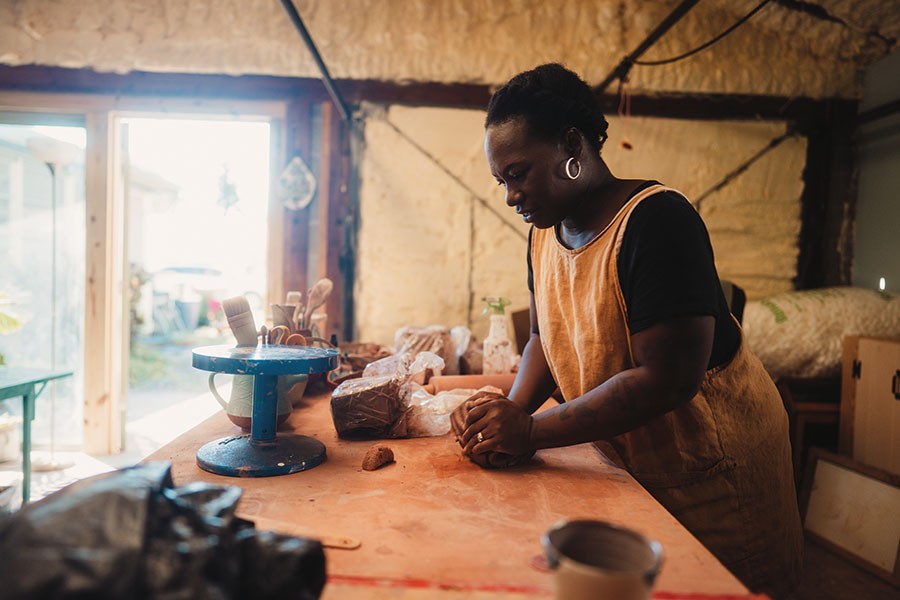
In their eagerness to contain Atoe within the bounds of a neat classification, many admirers of her work attempt to connect it to her Nigerian roots, where famous potters like Ladi Kwali put the country’s earthenware on the map in the mid-20th century. Atoe’s incised pieces certainly resemble earthenware styles from across the African continent, but it has as much in common with pre-Columbian indigenous aesthetics in its concentric shapes and patterns. Sometimes she finishes her work in an aquamarine glaze that evokes the patina of oxidized bronze sculptures from China, while other times she glazes her pieces with a weathered finish that gives it the mystique of an archaeological find. The common thread is the impression of timelessness, as though the work could have come from a history museum just as plausibly as it could have come from a boutique home goods store.
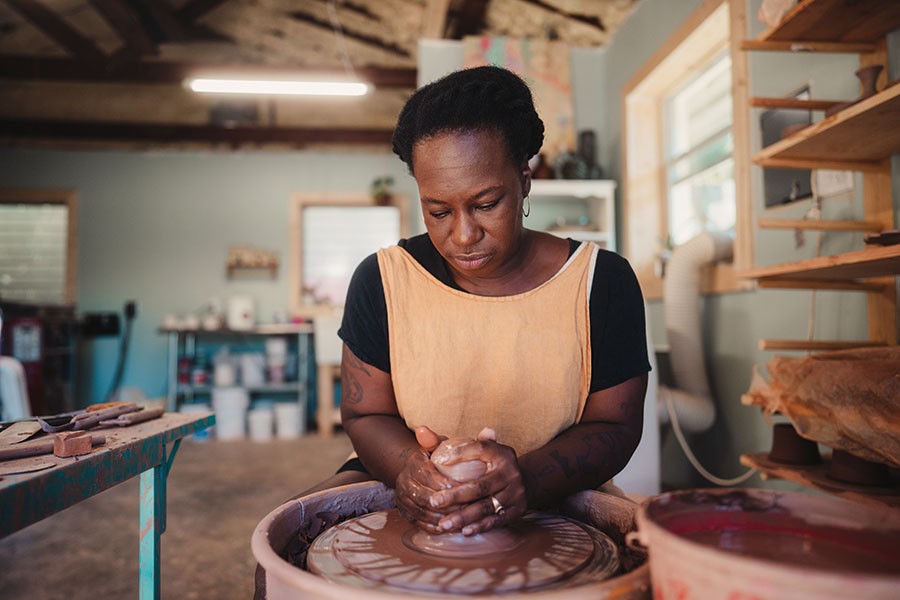
Nowadays, Atoe wonders what it would be like to give her work the formalized gallery treatment that reframes objects as art rather than crafts. “Functionality is important to me, but sometimes I find myself thinking, ‘Man, I wish I could just move into sculpture,’” says Atoe. She thinks about that line a lot, the one between high and low art, the tug of war between form and function. That dialogue is a far cry from the days when she’d pack up on short notice to rove the globe to bang heads. “Punk is about that sense of urgency, not thinking about technique, just doing it,” she says, “and with ceramics, I found a new way to exist in the world.” SRQ




